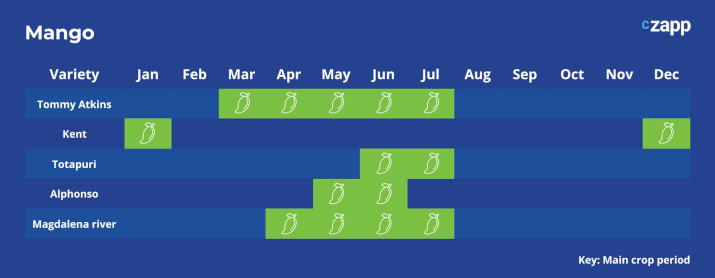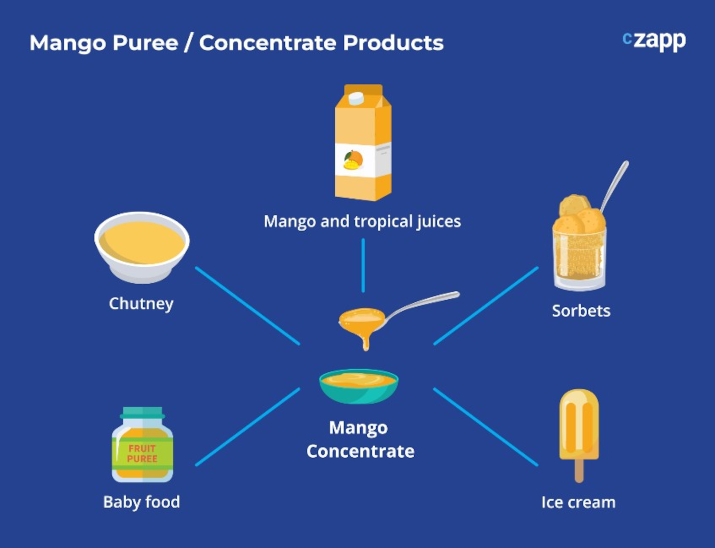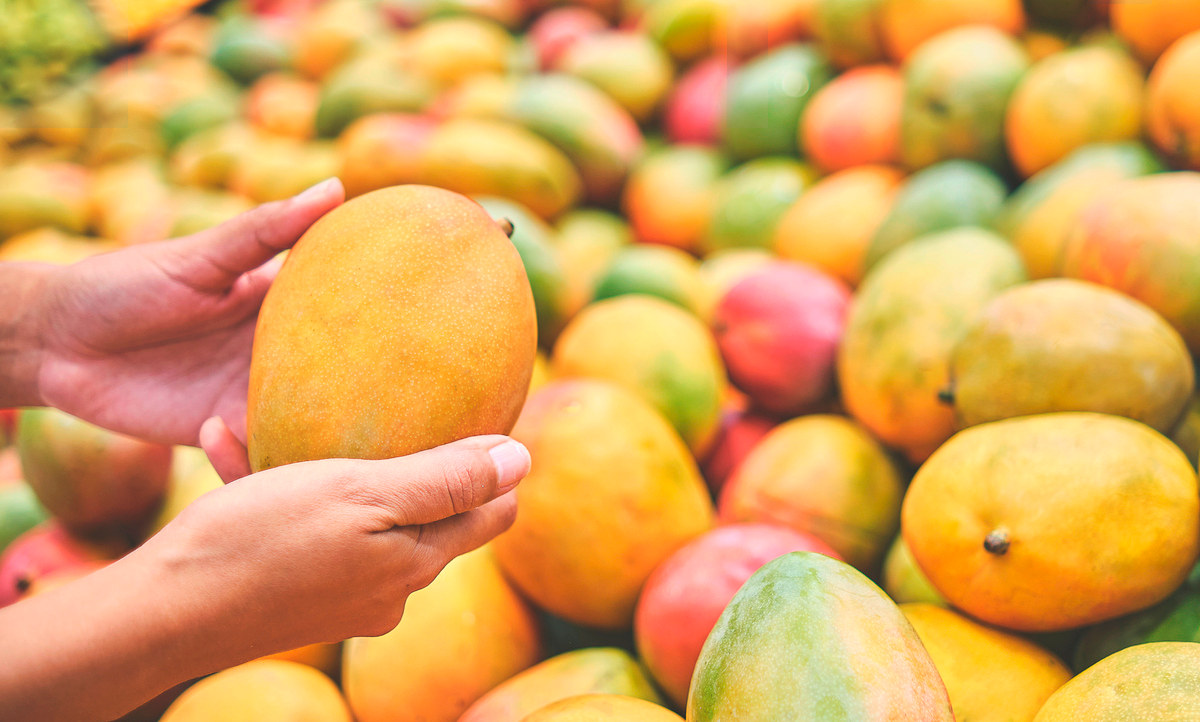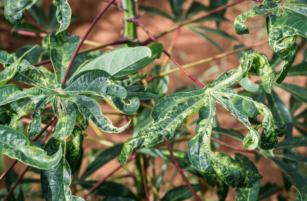Insight Focus
- Mango’s taste, colour and fibre content all vary by variety.
- India is a dominant supplier and its harvest is underway.
- In this article we recap the major mango varieties used around the world.
Mango Varieties
India is the biggest mango pulp/concentrate producer in the world, accounting for half of global production. 80% of India’s mango pulp production is from the Totapuri mango variety, with most of the remainder Alphonso.
Totapuri has a rich aromatic flavour and a combination of sweetness and acidity. It’s a prime table fruit, while its pulp and concentrate are suitable for the manufacture of juices, nectars, drinks, jams, and fruit cheese.
Alphonso is another variety used to make pulp. It has a mild flavour, described in one article as, “a cross between peach, nectarine, apricot and melon with notes of honey and citrus. But better.”
Mexico mainly exports Tommy Atkins, which has a mild sweet flavour and firm flesh. This makes it suitable for the fresh fruit market and for concentrate.
Colombia grows Tommy Atkins and Kent varieties, but the Magdalena River variety is more used for puree production. Colombia also has duty-free access to Europe.

Mango Puree & Concentrate
When buying mango it is important to identify which variety is suitable for the final product. For instance, buyers can use Totapuri mango for puree or concentrate while Alphonso is commonly offered just as puree to enhance flavour.
Therefore, knowing what mango variety you should buy and when it’s available is important. Moreover, mango seasonality can affect prices, as is the case of the Indian crop that starts with Alphonso mango in May and finishing in July and followed by the Totapuri variety that starts in June.

Some of the final products of Mango concentrate/pure are mango juices, baby food, ice creams. However, they are used as well in bakery, snacks, and dairy and confectionary industries. However, in these industry companies use specific customized solutions rather than just mango puree.

Mango Crop Updates
India
Unseasonal rains in late March caused the Sooty Mold disease, this was reflected on the poor-quality crop and a drop in prices. The Western region has had availability since April. Meanwhile, in the Southern region the pickup started in May. For this reason and considering the Totapuri mango crop started, many exporters have stopped processing Alphonso and proceeded to process Totapuri mango.
We expect the Totapuri mango crop to be good, showing higher production than in 2022. However, there will be more focus on table fruit than on processed product. Additionally, is relevant to highlight that seasonal disease might have an impact on the quality of the current crop.
This has created 2 outcomes that have fragmented the market for Mango:
- Good product is limited in the market which was processed initially when prices were high.
- Some exporters are still processing alphonso mango of inferior quality and lowering prices.
To secure good quality supply it will be important to buy from reliable suppliers and receive and test samples ahead of any purchase.
Colombia
The Summer crop reached its peak in early May, with a healthy crop until August. However, 95% of the product is already contracted. Prices are currently elevated therefore some companies are still waiting to have a better view of the Indian crop and its prices.
Mexico
As in Colombia, the crop is expected to run till August but with elevated prices. This has kept buyers conservative until Indian quotes are available.














